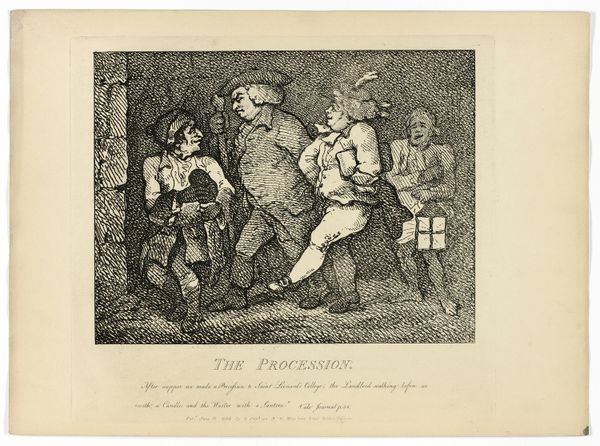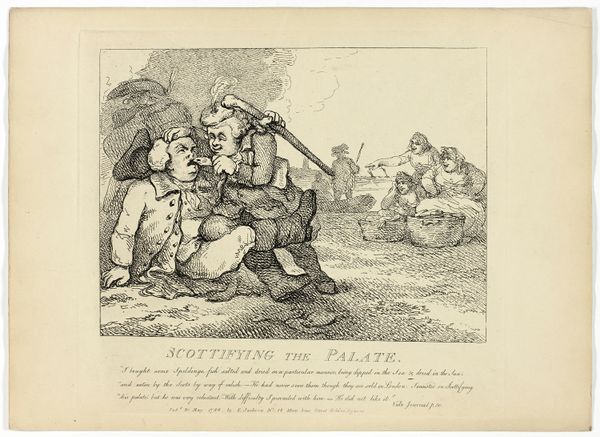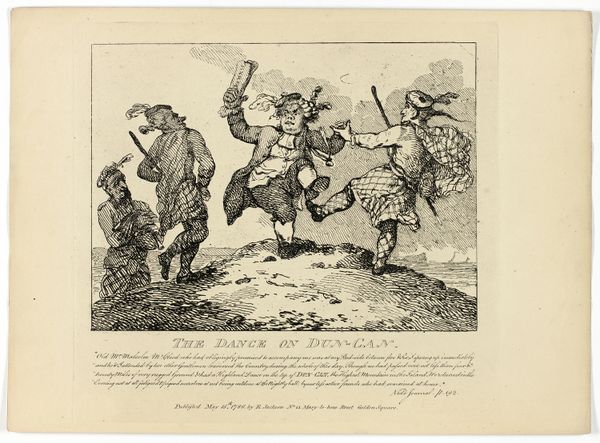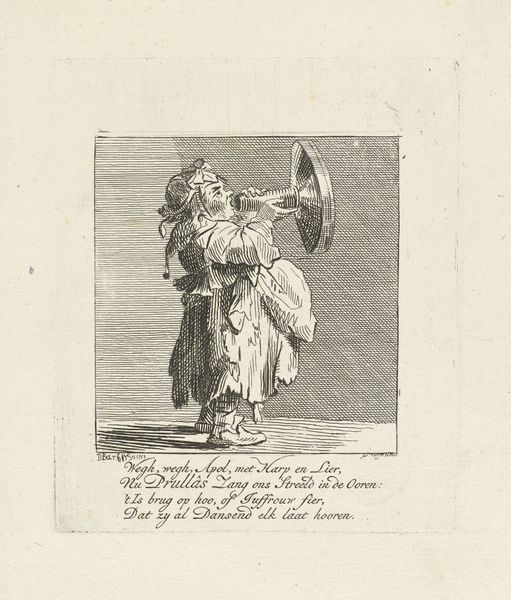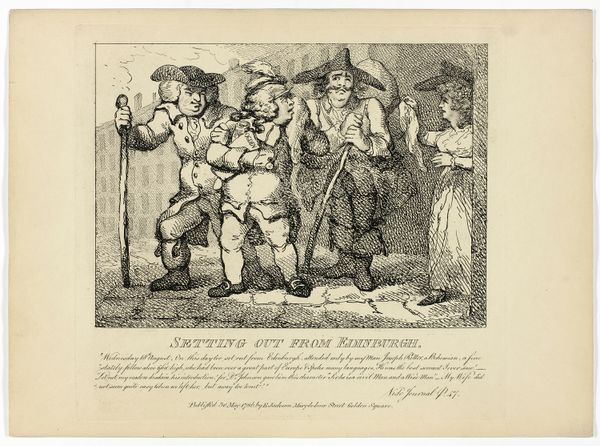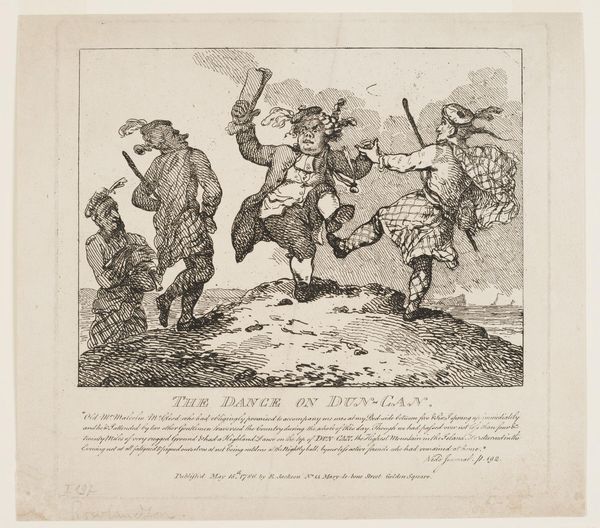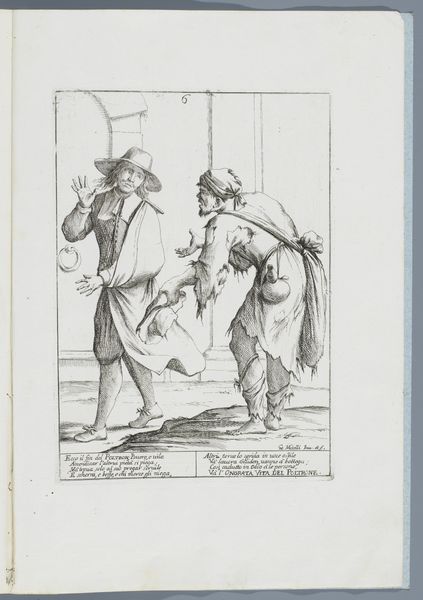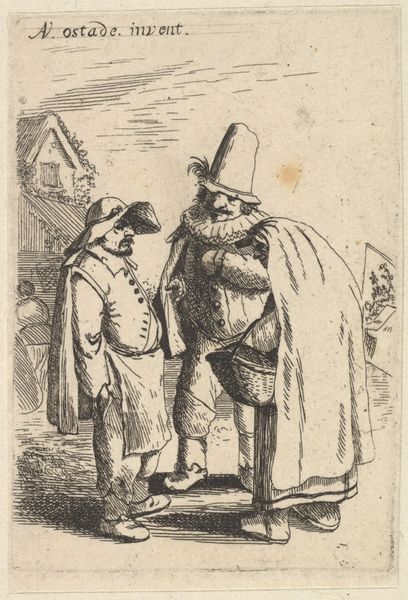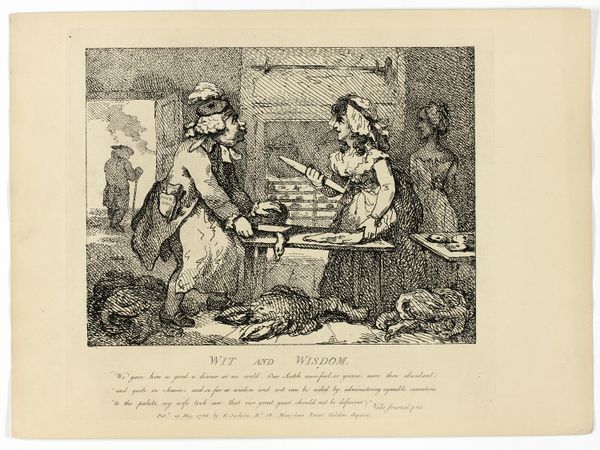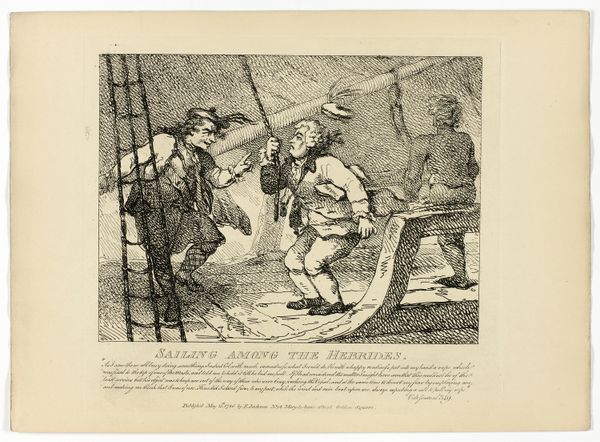
Walking up the High Street, from Boswell's Tour of the Hebrides 1786
0:00
0:00
drawing, print, etching, engraving
#
drawing
# print
#
etching
#
caricature
#
genre-painting
#
engraving
Dimensions: 275 × 380 mm (sheet)
Copyright: Public Domain
Curator: Today, we're examining Thomas Rowlandson's print, "Walking up the High Street, from Boswell's Tour of the Hebrides," created in 1786. The etching and engraving captures a lively street scene. Editor: My immediate impression is one of humorous awkwardness. The figures seem slightly off-balance, and their interactions are quite exaggerated. Curator: Absolutely. Rowlandson masterfully employs caricature to highlight the social dynamics at play. Notice the distinct rendering of each figure. The exaggerated features and clothing point to status and character. We see a corpulent figure using a walking stick seemingly lecturing a fellow with hat aloft in mid step, likely inebriated. Editor: Indeed. It speaks volumes about the era’s societal stratification. Think about the targets of satire here: wealth, class, perceived moral failings. These weren't neutral observations. They reflect a specific worldview and held particular individuals and groups up to public scrutiny. This form of “genre painting” normalizes inequality. The humor reinforces existing social structures, doesn't it? Curator: That's a valid point. While the scene appears lighthearted, its underlying message is embedded within the formal structure itself. Consider how Rowlandson’s skilled draftsmanship creates depth and perspective, drawing the viewer into this snapshot of 18th-century Edinburgh society. There is an intimacy between the two main subjects rendered in meticulous lines. It focuses attention on character rather than making a sweeping comment. Editor: The quote inscribed beneath the artwork sets an important narrative: “we marched along; he grumbled in my ear”. I’d like to challenge you to view it from this context. There are distinct power dynamics inherent to how Rowlandson, as a man, likely perceived gender roles, or racial power. I question what commentary the illustration offers when perceived this way. The print may offer more uncomfortable readings when evaluated with a critical, contemporary gaze. Curator: Fascinating to consider! For me, its artistic merit lies in Rowlandson’s capacity to condense social critique into these individual moments through skillful etching. Editor: And for me, the enduring value is prompting crucial discussion regarding how art mirrors the sociopolitical ideas present at the moment of conception.
Comments
No comments
Be the first to comment and join the conversation on the ultimate creative platform.
